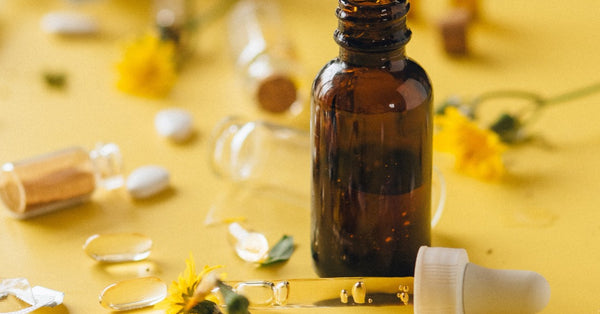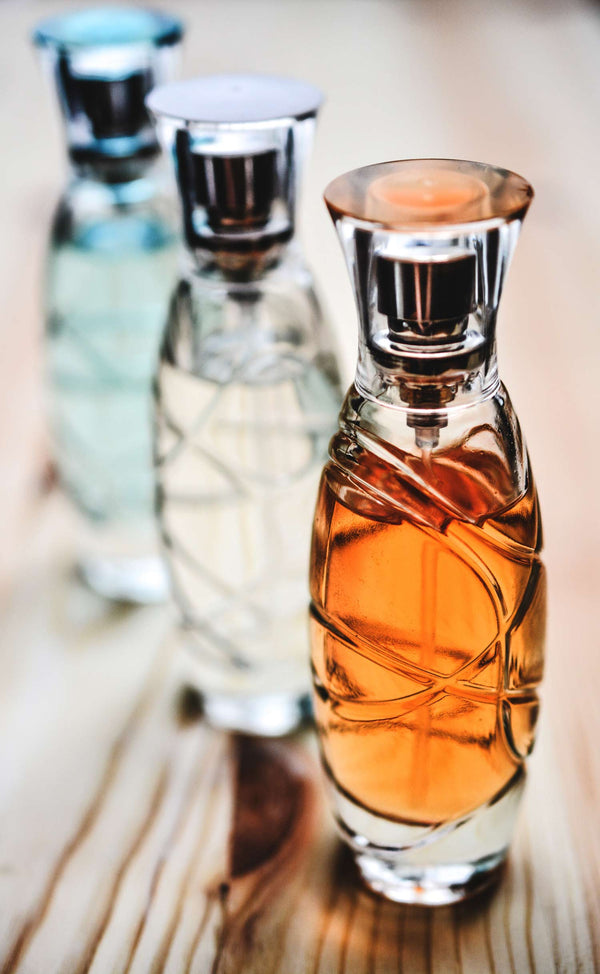
4 Safety Tips for Making Perfume with Essential Oils
There are many reasons you might want to make your own perfume or cologne. Maybe it’s a creative outlet. Perhaps you long for a fragrance as unique as you are.
Or maybe you’re looking to natural ingredients like essential oils as a safe alternative to synthetic commercial fragrances.
According to Athena Ziegler, a clinical aromatherapist who has helped develop fragrances for nearly half a dozen companies, there’s a lot of confusion in the market about what exactly essential oils are.
“Essential oils are the lifeblood oils and extracts of plants,” she said. These oils are distilled, cold-pressed, or extracted from plants’ leaves, flowers, seeds, and other parts to create a highly concentrated natural aromatic.
People have used essential oils for centuries, and their benefits go far beyond perfume. Lavender, for example, promotes relaxation, while tea tree oil wards off infection.
Used improperly, however, these natural oils can turn toxic. Some populations, like children, the elderly, or people with liver or kidney conditions, are especially vulnerable to overexposure.
To keep your essential oil perfume or cologne safe, follow these simple safety guidelines.
Essential Oil Safety Tip #1: Start Small
Begin your exploration of essential oils with one or two oils at a time. If you develop a negative reaction, it will be easier to identify the culprit if the list of suspects is small.
Before using an essential oil in your DIY perfume, perform an allergy test. Apply a drop of oil to a testing strip and swipe across a small area of skin. Then watch for any signs of rash or irritation for about 48 hours. If no adverse effects show, then you're good to go!
Don’t apply a drop directly to your skin; if you are allergic, you don’t want a full dose of the oil entering your system.
Dilution is key to using essential oils safely.
Pure essential oils are highly concentrated and should not be applied directly to skin. Instead, you need to mix your oil blend with a carrier agent like perfumer’s alcohol or fractionated coconut oil.
Water cannot be used as a carrier agent for essential oils. Remember – oil and water don’t mix!
Because of their concentrated nature, a little essential oil goes a long way.
When crafting your perfume recipe, aim for a balance of 20% fragrance and 80% carrier. If you have sensitive skin, start even lower, with about 15% fragrance.
Essential Oil Safety Tip #2: Know What You're Working With
When creating a DIY perfume or fragrance, your first concern is, understandably, what your ingredients smell like.
But essential oils are not simply fragrances. Like herbal extracts, they can stimulate or inhibit certain reactions in the body.
For example, citrus oils increase your sensitivity to the sun, making fair-skinned wearers more susceptible to sunburn. Rosemary should be avoided by people with high blood pressure.
Pregnant women and children should only use essential oils that have been extremely diluted and should avoid some oils altogether.
Essential Oil Safety Tip #3: Choose High Quality Ingredients
Not every vial of essential oil on the shelf is created the same. To create a safe essential oil perfume, you want to be sure you are using high-quality ingredients that were sourced responsibly.
All of the essential oils we sell here at Vetiver are premium-grade, free of alcohol and phthalates, and undiluted. We sell 100% pure oils sourced from reputable distributors.
When choosing your essential oils, select a reputable vendor. Only buy oils that are guaranteed 100% pure, not those that have been mixed with fillers or other ingredients. Check for the oil’s botanical name, extraction method, and country of origin.
The botanical name tells you exactly what you are getting.
For example, “chamomile oil” might come from German chamomile (Matricaria recutica), which has an intensely sweet aroma. Or it may come from Roman chamomile (Anthemis nobilis), which has a warmer smell.
Country of origin is important because, like wine, territory can affect the final product. French lavender, for example, smells very little like English lavender.
Essential Oil Safety Tip 4: Safe Storage
Essential oils should be stored in dark-colored glass bottles – both before and after your purchase. Keep your oils in a cool, dark place.
“Sun and heat increase the oxidation process, making your essential oils less potent,” Ziegler explained.
When you’ve finished using your oil, remove your rubber-top dropper and seal the bottle with a screw cap. Over time, the plant concentrates in the oil can cause rubber to break down.
You (hopefully) know not to drink your perfume ingredients, but children and animals may not.
Always store essential oils far out of reach of children and pets. Many essential oils are toxic if swallowed. Some can cause chemical burns if they reach mucous membranes, like near the eyes or the mouth.
Even “safe” quantities of essential oils for adults can be harmful to pets, whose bodies absorb and break down chemicals differently than humans.
The same goes for children, whose small size and still-developing liver and kidneys are vulnerable to overexposure.
Create Fragrances Safely with Essential Oils
Essential oils can be a wonderful alternative to synthetic perfume and cologne. As long as you respect the ingredients and use them responsibly, you can create stunning fragrances that are entirely safe to wear.
Enjoy this post? You'll also like our post about Essential Oil Safety for Pets and Children.

